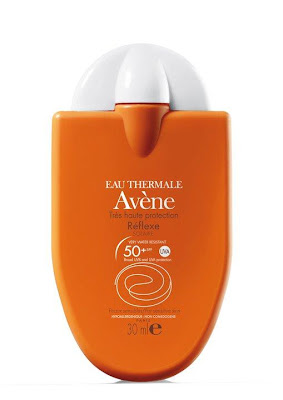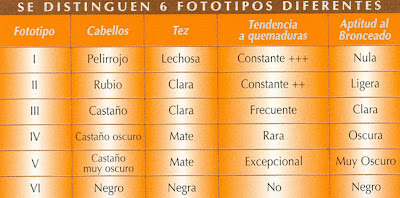Hola a tod@s, hoy os voy a hablar sobre protegernos del Sol. ¿Sol amigo o enemigo?, esta es una pregunta muy común, y hay mucha desinformación en este tema. Voy a intentar aclararos lo más posible en este post.
Hi everyone, today I am talking about protection from the Sun. The Sun it´s our friend or our enemy?, this is a very common question, and there is disinformation about it. In this post I am going to try to get some doubts solved.
Empezamos hablando que nuestra capa de ozono nos ayuda bloqueando parte de los rayos de Sol que emite nuestra gran estrella. Los rayos Y, X y UVC no traspasan, pero los rayos IR, UVA y UVB si traspasan la capa de ozono.
We will start talking about our Ozone layer that blocks part of the rays that comes from the Sun. The Y, X and UVC rays don´t go through that layer but the IR, UVA and UVB go through it and those are the possible problem.

La energía que llega a la Tierra está compuesta por:
The energy that comes to the Earth are separated in:

–Infrarrojos: Que nos aporta el calor, pero el factor negativo es que también nos puede provocar deshidratación y insolación.
-Infrared: Gives us the warm, but the negative factor is that also gives as the possibility of dehydration and heat stroke.
–Luz visible: Que por un lado tiene un efecto antidepresivo y modula las funciones hormonales, pero por el lado negativo provoca el envejecimiento cutáneo.
-Visible light: Gives us an antidepressant effect and modulates hormonal functions, but in the down side it causes skin aging.
–Ultravioleta A (UVA): Nos aporta el tan deseado y buscado bronceado, pero por el lado negativo encontramos envejecimiento cutáneo, posibles factores en la aparición de cánceres de piel. Estos son los que hasta hace poco pensabamos que eran beneficiosos, los Rayos UVA.
-Ultraviolet A (UVA): Help us to get the so desired tan, but in the down side causes skin aging and has some possible factor in the skin cancer.
–Ultravioleta B (UVB): Por un lado nos aportan bronceado y nos ayudan a síntetizar la Vitamina D o antirraquítica pero por el lado negativo producen quemaduras solares y son un factor importante en la aparición de los cánceres de piel.
-Ultraviolet B (UVB): For one side we get the tan and help us to synthesizing vitamin D or antirachitic, but for the down wide it gives us sun burns and help to the development of skin cancer.
Una vez llegado a este punto de entendimiento de lo beneficioso y perjudicial de Sol hacia nuestra piel, pasamos a la protección que necesitamos para evitar las partes negativas de la exposición él.
Once we have reached this point of the goods and down sides of what the Sun do to our skins, we will move to the necessary protection we need to don´t get the down side hurt our skin.
Hay que tener en cuenta que no todas las personas tenemos las mismas defensas a lo que hacía los rayos del Sol se refiere, y dependiendo de varios factores tendremos mayor probabilidad de quemarnos o ponernos morenas.
We need to understand that not everyone has the same defenses agains the Sun´s ray, we all have different phototypes.
Según vemos en este cuadro cuanto más clara de piel eres, más claro tenemos el color del pelo, mas propensas somos a quemarmos, y menos aptitud tenemos al bronceador mayor protección solar necesitaremos y durante más tiempo, con lo que aún poniendonos morenas necesitaremos seguir usando una protección alta.
As we can see in the box below, if we have light hair color, light skin tone, we get sun burn more easily and we don´t get tan so easy we will need a high sunblock protection and as long as we are expose to the Sun, even if we are getting tan.
Si el caso es lo contrario, si tenemos la tez más oscura, el pelo más oscuro, somos más propensas a ponernos morenas más que a quemarnos, menos protección necesitaremos y podremos ir bajandola según vayamos consiguiendo el bronceado, eso si nunca dejaremos de utilizar la protección solar dá igual que tipo de Fototipo seamos.
In the opposite side, if we have dark hair, dark skin tone, we normally don´t get sun burns and we get tan very easy we will need a lower sunblock protection, and lower down as we are getting tan, but that doesn´t mean you won´t need any sunblock at all.
Otro factor a tener en cuenta a la hora de elegir nuestra protección solar es que no solo debemos protegernos de los rayos que dán directamente a nuestra piel sino también todos aquellos que se reflejan en la superficie que tenemos al rededor e igualmente dán a nuestra piel, por ejemplo:
Another factor to have in mind is that we just get protect but the Sun´s ray that hit on us directly but we are expose to the reflection of the surfaces we have around, for example:
Si estamos cerca del agua hay que contar con un 20% más de rayos que recibimos.
Si estamos cerca de la hieba es un 10% más.
Si estamos cerca de la nieve es un 85% más y
si estamos cerca de la arena es entre un 15% y un 25% más.
If we are next to the water we will have an extra 20% of Sun´s rays hitting on us.
If we are next to the grass we will have an extra 10%.
If we are next to the snow we will have an extra 85% and
if we are next to the sand we will have an extra 15% to 25%.
Una vez sabemos esto nos podremos porteger más y mejor. Evitando el no añadir protección a nuestra piel porque estemos debajo de una sombrilla porque igualmente nos estará llegando los rayos reflejados.
Once we know how to protect our skin and avoiding don´t adding sunblock if we are under an umbrella, we will have better skin protection.
Otro error que cometemos es que pensamos que porque el día está nublado no nos vamos a quemar y no necesitamos protección, porque los Infrarrojos no traspasan las nubes que es por lo que hace menos calor pero los rayos UVA y UVB si traspasan las nubes lo que hace que sigamos necesitando protección y estemos expuestos a quemarnos.
Another typical error is to think we don´t need sunblock in a cloudy day, well the IR ray don´t go through the clouds that´s why it´s less warm but the UVA and UVB rays go through the clouds so we have the same change or getting sunburns and we will still need to protect our skin.
Es recomendable que si estamos en una exposición intensa al Sol apliquemos nuestra protección solar cada 2 horas, evitando las horas centrales del día al ser las más peligrosas.
It´s recommended if we are going to be expose to the Sun for a few hours reapply the sunblock every two hours, and avoid the middle of the day Sun rays.
Dentro de las protecciones solares tenemos la protección total que es 50, que nos protege del 98% de los rayos UV, la protección 20 que nos protege del 95% de los rayos UV y la protección 12 que nos protege del 92% de los rayos UV, no parece mucha diferencia, pero en una piel propensa a las quemaduras puede crear una gran diferencia. Apartir de la protección 50 no hay un mayor porcentaje de protección, por eso se toma esta protección como la más alta.
The highest protection is 50, we will get 98% of protection agains the UV, with 20 we will have 95% protection and with 12 we will have the 92%. It doesn´t seams to be a big different right? it is if we are likely to get sunburns. So above 50 they is not higher protection.
Después de todo esto me gustaría comentaros como última cosa que el bronceador es un mecanismo de defensa de nuestro cuerpo que activa la melanina y crea una capa de protección para evitar que los rayos UV penetren, pero esta capa de protección no es perfecta e igualmente necesitamos añadir protección con los portectores solares aún estando bronceadas.
After all of these facts there is just one thing left to say, the tan is the defense mechanism of the body, the melanin gets activated to create a barrier to protect our skin from the UV, but this barrier it´s not perfecto so even with tan we still have to use sunblocks to help our skin.
Con todo esto os quiero decir que disfrutéis del Sol pero que no os olvidéis que igualmente nos puede hacer mucho daño sino usamos la protección adecuada.
So now I just want to say have fun with the Sun and get tan but knowing the good and down side parts of it, take it easy and protect your skin.

Siempre llevo esta crema protección 50 en el bolso.
I always have this sunblock of 50 on my handbag.
Espero que os haya servido de ayuda, hasta la próxima,
I hope it´s been useful, until next time,
Un beso,
Take care,







Está muy bien el post sobre el sol… pero he de añadir que soy pelirroja natural, todavía sin tintar!!! de piel blanca, y si tenemos la precaución de empezar pronto a ir a la playa, abril o mayo, incluso a veces en marzo, (depende del tiempo) si que nos bronceamos, no del color de una morena, pero nos bronceamos… Besos
Muy buen post.
Besos!